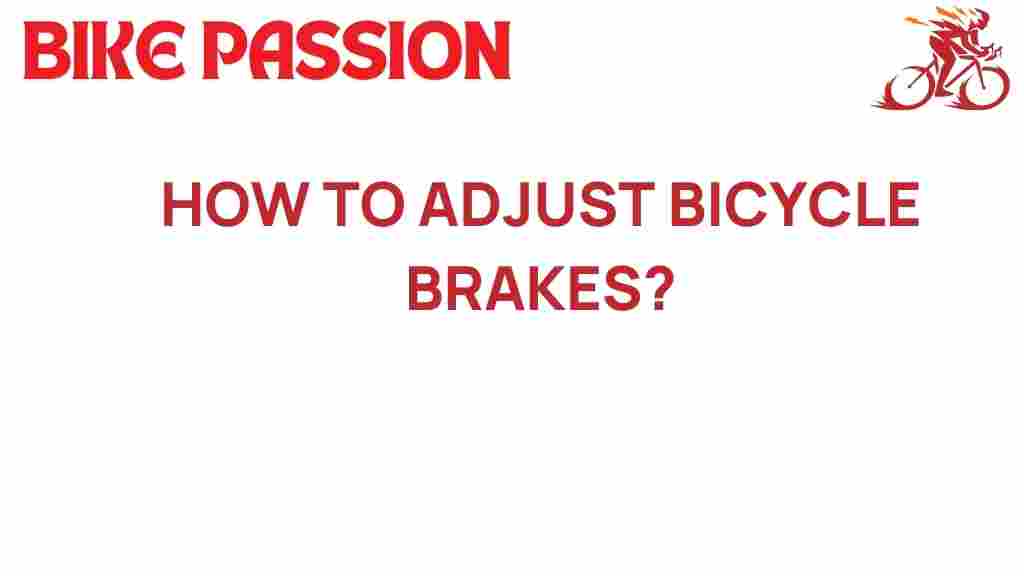Mastering Bicycle Brake Adjustments: A Step-by-Step Guide
Bicycle brakes are a critical component of your bike, ensuring your safety as you ride. Proper adjustment and maintenance of your bicycle brakes can enhance your cycling performance and provide a smoother riding experience. In this comprehensive guide, we will explore the importance of brake adjustments, provide step-by-step instructions for DIY maintenance, and offer troubleshooting tips to ensure your brakes function optimally. Whether you’re a seasoned cyclist or a beginner, mastering bicycle brake adjustments is essential for cycling safety.
The Importance of Bicycle Brake Adjustments
Maintaining proper bicycle brakes is crucial for several reasons:
- Safety: Effective brakes are vital for stopping quickly and safely, especially in emergency situations.
- Performance: Well-adjusted brakes enhance your bike’s performance, allowing for smoother and more controlled rides.
- Longevity: Regular maintenance and adjustments can prolong the life of your braking system.
- Cost-Effective: DIY adjustments save money on professional bike services.
With these factors in mind, let’s dive into the step-by-step process of adjusting your bicycle brakes.
Step-by-Step Guide to Adjusting Bicycle Brakes
Tools You Will Need
Before starting the adjustment process, gather the following tools:
- Allen wrenches
- Flathead screwdriver
- Phillips screwdriver
- Bike stand (optional)
- Brake cleaner (optional)
- Rags for cleaning
Step 1: Inspect Your Brakes
Before making any adjustments, perform a thorough inspection of your bicycle brakes:
- Check the brake pads for wear and tear.
- Ensure that the brake cables are not frayed or damaged.
- Inspect the brake levers for proper function.
- Look for any debris or dirt that may affect performance.
Step 2: Adjust the Brake Pads
Properly aligned brake pads are essential for effective braking. Follow these steps to adjust them:
- Loosen the bolt holding the brake pad in place using an Allen wrench.
- Position the brake pad so that it makes even contact with the rim of the wheel.
- Ensure that the pad is aligned straight and not touching the tire.
- Tighten the bolt securely once the pad is in the correct position.
Step 3: Adjust the Brake Cables
Next, you need to adjust the brake cables for optimal tension:
- Locate the cable anchor bolt on the brake arm.
- Loosen the anchor bolt slightly to adjust the cable tension.
- Pull the cable to remove slack and re-tighten the anchor bolt.
- Test the brake lever to ensure that the brakes engage firmly without excessive travel.
Step 4: Fine-Tuning the Brake Lever Reach
Adjusting the reach of the brake levers can enhance comfort and control:
- Locate the reach adjustment screw on the brake lever.
- Turn the screw to increase or decrease the distance between the lever and the handlebars.
- Test the lever to ensure it feels comfortable when braking.
Step 5: Test the Brakes
After making adjustments, it’s essential to test the brakes:
- Spin the wheels to check for rubbing.
- Pull the brake levers to ensure they engage smoothly.
- Test the brakes while riding in a safe area to confirm they function correctly.
Troubleshooting Common Brake Issues
Even with proper adjustments, you may encounter issues with your bicycle brakes. Here are some common problems and their solutions:
Problem: Brake Pads Rubbing Against the Wheel
If your brake pads are rubbing against the wheel, check the following:
- Ensure the brake pads are aligned properly with the rim.
- Check for any wobble in the wheel that might affect alignment.
- Adjust the brake caliper position if necessary.
Problem: Brake Lever Feels Spongy
A spongy brake lever can indicate a problem with the brake cable or hydraulic system:
- Inspect the cable for fraying or damage.
- Bleed the hydraulic system if you have hydraulic brakes.
- Adjust cable tension to remove excess slack.
Problem: Brakes Not Engaging
If your brakes do not engage, consider these troubleshooting tips:
- Check if the brake cables are properly connected.
- Ensure that the brake pads are not overly worn.
- Inspect the brake levers for any damage.
Regular Maintenance Tips for Bicycle Brakes
- Clean the Brake Pads: Use brake cleaner to remove dirt and debris from the pads regularly.
- Check Brake Cables: Inspect cables for fraying and replace them if necessary.
- Inspect Brake Pads: Replace brake pads when they become worn down or uneven.
- Keep the Rim Clean: Wipe the rim with a clean rag to ensure proper braking performance.
- Regularly Test Brakes: Test your brakes before each ride to ensure they are functioning properly.
Conclusion
Adjusting and maintaining your bicycle brakes is essential for ensuring cycling safety and optimal performance. By following the steps outlined in this guide, you can master the art of bicycle brake adjustments and tackle common troubleshooting issues with confidence. Regular maintenance not only enhances your cycling experience but also prolongs the life of your bike’s braking system.
For more cycling tips, check out our article on cycling gear essentials. Remember, a well-maintained bike is a safe bike!
By taking the time to learn about bicycle brakes, adjustment, and maintenance, you empower yourself as a cyclist and enhance your overall riding experience. Happy cycling!
For further reading and resources, visit Bicycle Maintenance Basics.
This article is in the category Maintenance and created by BikePassion Team
